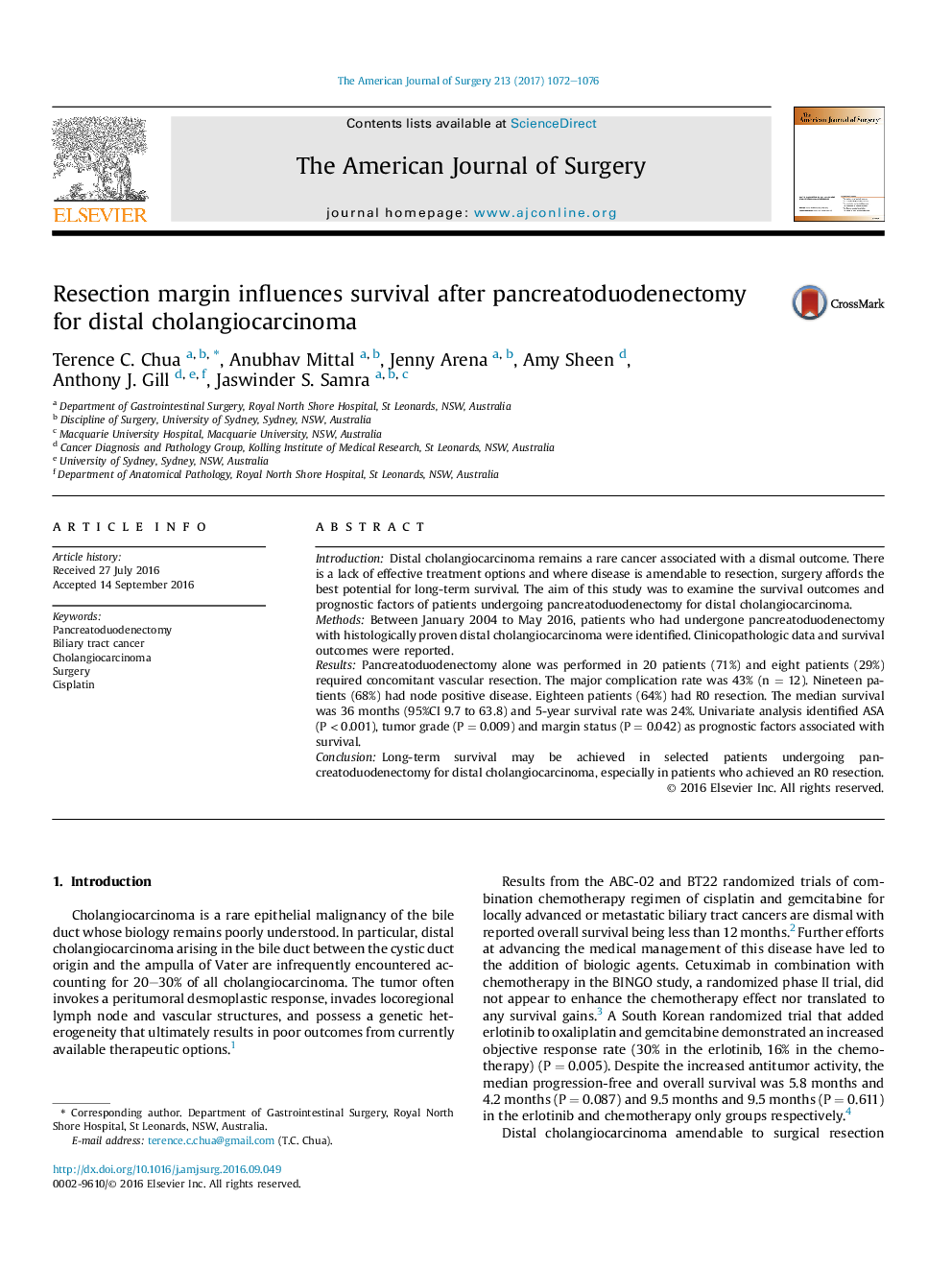| Article ID | Journal | Published Year | Pages | File Type |
|---|---|---|---|---|
| 5731249 | The American Journal of Surgery | 2017 | 5 Pages |
â¢Distal cholangiocarcinoma remains a rare cancer associated with a dismal outcome.â¢We report a 5-year survival of 24% after pancreatoduodenectomy and identified margin status as a surgical variable predicive of survival.
IntroductionDistal cholangiocarcinoma remains a rare cancer associated with a dismal outcome. There is a lack of effective treatment options and where disease is amendable to resection, surgery affords the best potential for long-term survival. The aim of this study was to examine the survival outcomes and prognostic factors of patients undergoing pancreatoduodenectomy for distal cholangiocarcinoma.MethodsBetween January 2004 to May 2016, patients who had undergone pancreatoduodenectomy with histologically proven distal cholangiocarcinoma were identified. Clinicopathologic data and survival outcomes were reported.ResultsPancreatoduodenectomy alone was performed in 20 patients (71%) and eight patients (29%) required concomitant vascular resection. The major complication rate was 43% (n = 12). Nineteen patients (68%) had node positive disease. Eighteen patients (64%) had R0 resection. The median survival was 36 months (95%CI 9.7 to 63.8) and 5-year survival rate was 24%. Univariate analysis identified ASA (P < 0.001), tumor grade (P = 0.009) and margin status (P = 0.042) as prognostic factors associated with survival.ConclusionLong-term survival may be achieved in selected patients undergoing pancreatoduodenectomy for distal cholangiocarcinoma, especially in patients who achieved an R0 resection.
